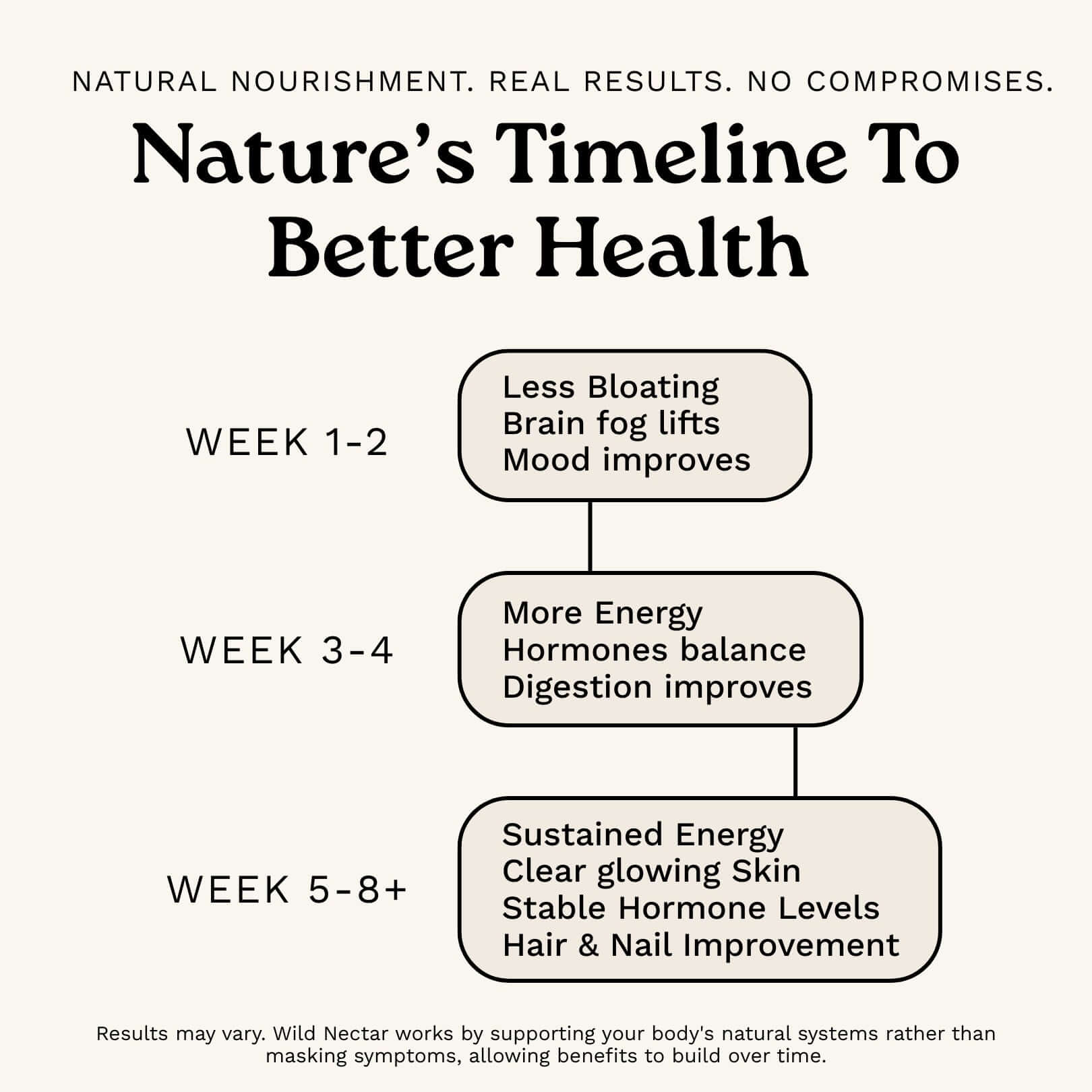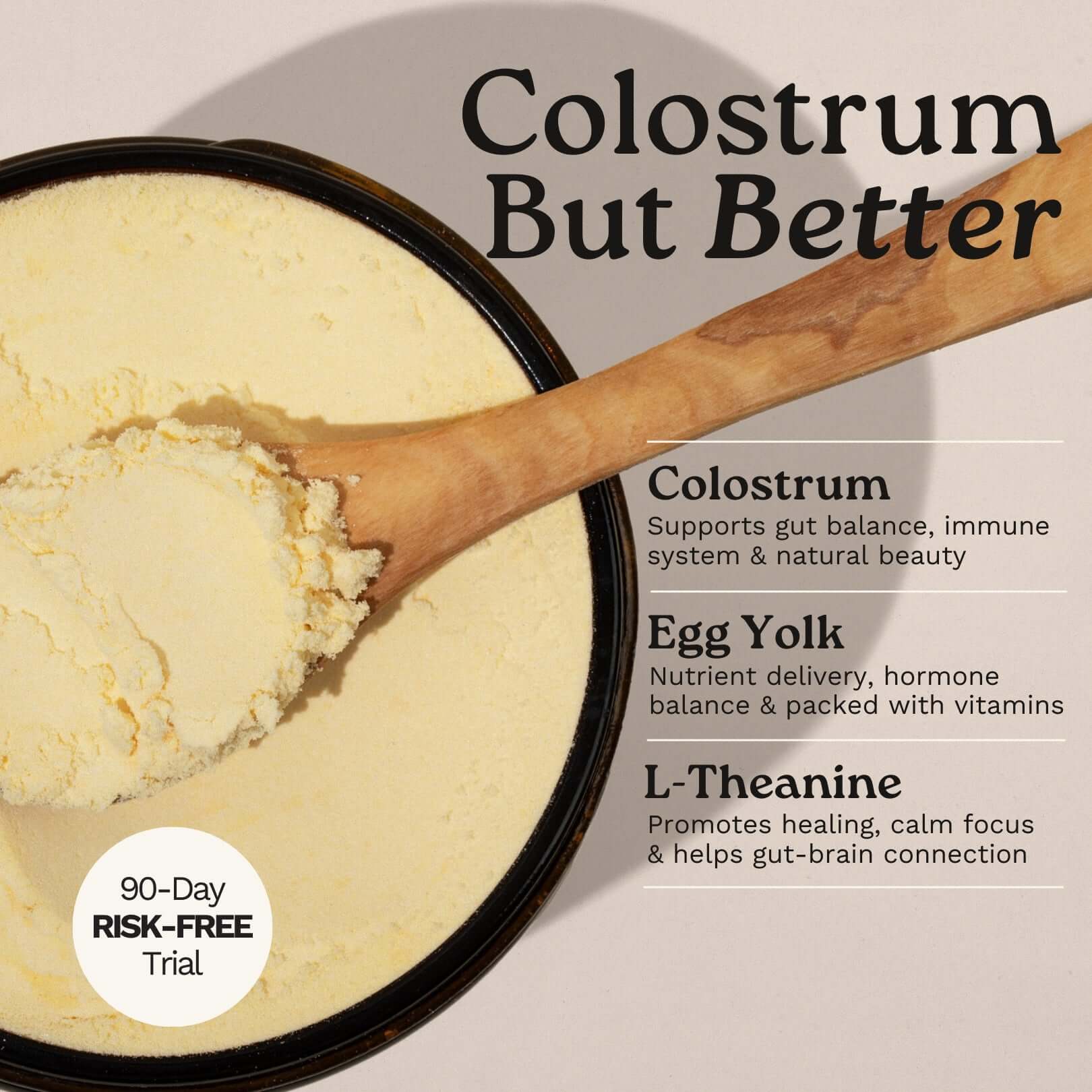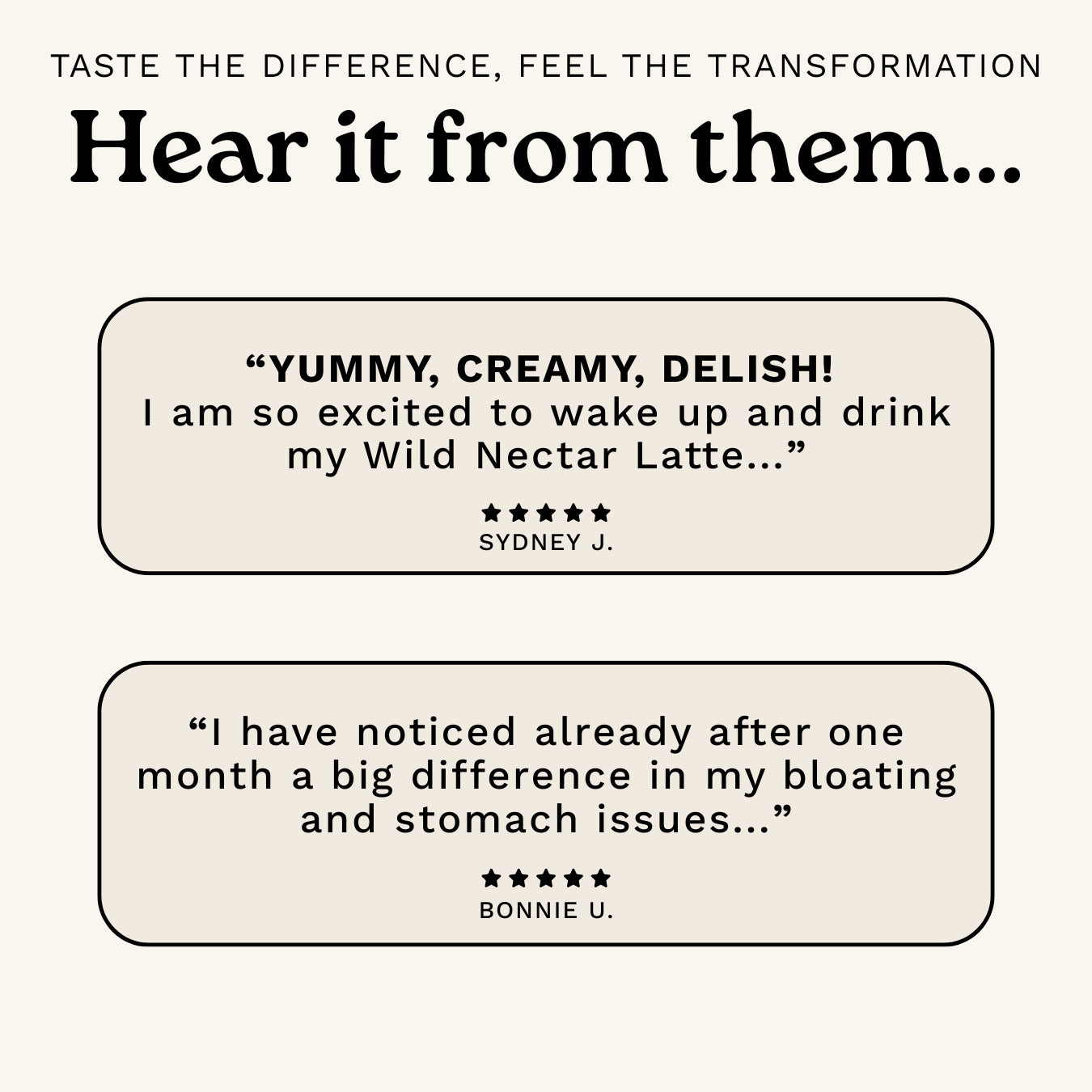5 Signs Your Body Needs More Bioavailable Nutrients
Feeling tired, dealing with muscle cramps, or noticing brittle nails? These could be signs your body isn’t absorbing nutrients properly. Poor nutrient bioavailability - how well your body absorbs and uses vitamins and minerals - can lead to fatigue, weak immunity, and even mental fog.
Here’s what to watch for:
- Constant Fatigue: Linked to low iron, B12, or magnesium levels.
- Muscle Cramps: Often caused by deficiencies in magnesium, calcium, or potassium.
- Slow Healing & Weak Immunity: Low vitamin D, C, or zinc could be the culprit.
- Brittle Hair & Nails: Poor absorption of iron, zinc, or biotin may be to blame.
- Mental Fog: Omega-3, B12, and iron deficiencies can harm focus and memory.
Quick Fixes: Pair nutrients (e.g., vitamin C with iron), choose bioavailable forms like magnesium glycinate, and avoid absorption blockers like tea during meals. Addressing these gaps can improve energy, immunity, and overall health in weeks.
Related video from YouTube
1. Constant Tiredness Despite Good Sleep
Feeling tired all the time, even after a full night's rest, might be a sign that your body isn't absorbing certain nutrients properly.
Key Nutrient Deficiencies and Absorption
Three common nutrient deficiencies linked to persistent fatigue are iron, vitamin B12, and magnesium [3][6]. These nutrients are essential for energy production and transporting oxygen throughout your body. When they're lacking, your cells can't produce energy efficiently. For example:
- Iron: Low levels reduce your body's ability to carry oxygen.
- Vitamin B12: Deficiency can disrupt nerve function and energy production at the cellular level.
| Iron Source | Absorption Rate | Effect on Body |
|---|---|---|
| Animal-based (Haem) | 15-35% | Supports oxygen transport |
| Plant-based (Non-haem) | 2-20% | Needs enhancers like vitamin C |
How to Boost Nutrient Absorption
To regain energy, focus on foods and supplements that are easier for your body to absorb:
- Iron: Consider iron bisglycinate supplements, which are gentler on the stomach compared to ferrous sulfate. For natural sources, pair 100g of beef (providing 2.7mg of haem iron) with vitamin C-rich foods like bell peppers to improve absorption [1][5].
- Vitamin B12: Sublingual methylcobalamin supplements are better absorbed than regular tablets. For dietary sources, clams are a powerhouse, offering 84mcg per 3oz serving [5].
The Role of Nutrient Pairing
Pairing certain nutrients can make a big difference. For instance, adding 50mg of vitamin C (half a bell pepper) to plant-based iron sources can triple the amount your body absorbs [1][5]. With proper supplementation and dietary adjustments, many people notice improved energy levels within 2-4 weeks [3].
While fatigue is the most obvious symptom, prolonged deficiencies can also cause issues like muscle cramps. Addressing these nutrient gaps early is key to feeling better.
2. Muscle Cramps and Spasms
Frequent muscle cramps and spasms might indicate your body isn't getting enough key nutrients needed for proper muscle function.
The Role of Nutrient Deficiency
Muscle cramps are often linked to low levels of magnesium, calcium, and potassium. Magnesium, in particular, plays a critical role in helping muscles relax. Without enough of these minerals - or if they're not properly absorbed - muscles struggle to contract and relax smoothly, leading to discomfort and spasms.
Comparing Nutrient Absorption
The form of a nutrient significantly impacts how well your body absorbs it. Here's a quick look at some common forms:
| Nutrient Form | Absorption Rate | Effectiveness |
|---|---|---|
| Magnesium Glycinate | High (80%) | Excellent |
| Magnesium Oxide | Low (20-30%) | Limited |
| Calcium Phosphate | Moderate (up to 25%) | Decent |
Practical Steps to Relieve Cramps
To combat muscle cramps, prioritize nutrient sources your body can absorb well:
- Wild-caught salmon offers 22mg of magnesium per 3-ounce serving, plus omega-3s that boost mineral absorption [5].
- Magnesium glycinate supplements are highly absorbable, with an 83% bioavailability compared to just 40% for magnesium oxide [1][3].
- Grass-fed colostrum and organic egg yolk powder supply minerals in forms your body can easily use.
Fixing these imbalances not only helps your muscles but also supports other body systems, which we'll touch on later.
Maximizing Nutrient Benefits
Pairing certain nutrients can enhance their effectiveness:
- Vitamin D increases calcium absorption by 30-40% when taken together [1][5].
- Combining magnesium glycinate with potassium citrate has been shown to reduce muscle cramps by 50% more than taking either mineral alone [3].
Timing matters, too. For example, take calcium and magnesium at different times to avoid absorption interference [3].
3. Poor Healing and Weak Immunity
Your immune system takes a hit when your body struggles to absorb nutrients effectively. This can lead to slower recovery and a higher chance of getting sick.
Deficiency Connection
If you're noticing slow wound healing or getting sick more often, nutrient deficiencies might be to blame. For example, a University of Southampton study found that people with vitamin D levels below 25 nmol/L had a 13% higher risk of respiratory infections compared to those with levels above 75 nmol/L [3].
"Clinical studies demonstrate vitamin C deficiency increases infection risk by 3-fold in surgical patients" [3].
This is particularly concerning given that 42% of Americans are vitamin D deficient [2].
Bioavailability Comparison
Not all nutrient sources are equally effective for immune health. Here's how different forms stack up:
| Nutrient Form | Absorption Rate | Effective Sources |
|---|---|---|
| Zinc Glycinate | 43% higher than standard forms | Supplements |
| Liposomal Vitamin C | 90% absorption | Specialized supplements |
| Dietary Vitamin C | 50% absorption | Citrus fruits, broccoli |
| Vitamin D3 | 87% better retention than D2 | Lichen-based supplements |
Actionable Solutions
To strengthen your immune system, focus on nutrient-dense foods and targeted supplements.
Food Sources:
- Squeeze lemon juice over oysters to enhance zinc absorption [5].
- Add fermented dairy to your diet - it contains 150% more absorbable K2 than non-fermented options [5].
Supplement Strategy: Consider supplements like organic egg yolk powder or grass-fed colostrum for concentrated, easily absorbed nutrients.
Nutrient Synergy
Timing and combining nutrients can make a big difference:
- Pair Vitamin D3 with K2 to improve calcium use, which supports immune cell signaling [5].
- Take zinc with quercetin to boost intracellular zinc retention by 27% [1][3].
To maximize absorption, avoid taking zinc and iron supplements at the same time - they compete for absorption in your body.
sbb-itb-38c6ecd
4. Weak Hair and Nails
Brittle nails and thinning hair often signal poor nutrient absorption, not just inadequate intake. This is especially true for key minerals that support structural proteins.
Deficiency Connection
Research highlights three common deficiencies tied to weak hair and nails:
- Low iron levels (ferritin below 30 ng/mL) can disrupt hair follicle function.
- Zinc deficiency often appears as nail ridges and slower nail growth.
- Low urinary biotin (under 100 nmol/24hr) points to absorption challenges [2].
Bioavailability Comparison
Nutrient absorption varies significantly depending on the source. Animal-based foods generally offer higher absorption rates for iron and biotin, while certain supplements perform better than others. Here's a quick comparison:
| Nutrient Source | Bioavailability Rate | Best Forms |
|---|---|---|
| Animal Iron | 15-35% absorption | Red meat, organ meats |
| Plant Iron | 2-20% absorption | Spinach, lentils |
| Animal Biotin | 100% absorption | Eggs, liver |
| Plant Biotin | 30-40% absorption | Nuts, seeds |
| Zinc Glycinate | 43% higher absorption | Supplement form |
Actionable Solutions
If you're looking to strengthen hair and nails, improving nutrient absorption is key. Here’s how:
Food Preparation Tips:
- Prioritize animal-based foods for better absorption.
- Pair complementary nutrients during meals for maximum benefit.
Supplement Strategy: Opt for iron bisglycinate (absorbed twice as effectively as standard iron) and D-biotin supplements for better results [1][2].
Nutrient Synergy
Strategic nutrient combinations can further enhance absorption:
- Pair biotin with manganese to support keratin production [2].
- Take zinc supplements with protein-rich meals to boost absorption rates by up to double [5].
Addressing these gaps not only leads to healthier hair and nails but also supports broader cellular functions.
While physical signs like these are noticeable, subtle cognitive shifts can also hint at absorption problems...
5. Mental Fog and Focus Problems
Struggling with mental fog or trouble concentrating? These could be signs that your body isn’t getting the nutrients it needs for proper brain function. Knowing how nutrient absorption affects your mind can help you make smarter choices.
The Role of Deficiencies
Low levels of key nutrients like B12 (below 300pg/mL), iron (ferritin under 30ng/mL), and omega-3s can directly harm focus and memory [3][6][7].
How Nutrient Sources Matter
Not all nutrient sources are absorbed equally. Here’s a quick comparison:
| Nutrient | Source Type | Absorption Rate |
|---|---|---|
| Omega-3 | Fish Oil | 90% absorption |
| Omega-3 | Plant ALA | 5-10% conversion |
Steps to Improve Nutrient Absorption
Boost Through Foods:
- Sardines (packed with highly absorbable omega-3s)
- Algal DHA (absorbs as well as fish oil) [5]
Choose Smarter Supplements:
- Liposomal iron for 3-4x better absorption [3]
- Methylcobalamin B12 for better usability by the body
Pair Nutrients for Better Results
- B vitamins work best when taken together for improved brain nutrient delivery.
- Combine omega-3s with phosphatidylserine to boost brain cell absorption by 29% [5].
Specialized blends, like those with organic egg yolk powder and L-theanine, can offer even better absorption for cognitive support.
If focus issues are holding you back, the key might lie in choosing the right nutrient sources your body can actually absorb.
Nutrient Sources and Their Absorption Rates
Once you've identified signs of nutrient deficiencies, the next step is to focus on sources your body can absorb effectively. How well your body processes different nutrients plays a key role in tackling deficiencies.
Animal vs. Plant Sources
Nutrients from animal sources are often absorbed more efficiently than those from plants. For instance, vitamin A from animal sources (retinol) has a bioavailability of 74%, while plant-based β-carotene only reaches 15.6% [1].
| Nutrient | Animal Source | Plant Source | Absorption Rate |
|---|---|---|---|
| Vitamin A | Liver (Retinol) | Carrots (β-carotene) | 74% vs. 15.6% |
Boosting Absorption with Food Combinations
Pairing certain foods can significantly improve how your body absorbs nutrients. For example, adding healthy fats to carrots can increase β-carotene conversion by up to six times [1].
Supplements with Better Absorption
Some supplements are designed for improved absorption, including:
- Algal DHA: Absorbs as efficiently as fish oil.
- Lichen-based D3: A better alternative to D2 supplements.
Highly Absorbable Food Sources
Certain foods naturally offer higher nutrient absorption:
- Kakadu plum: Packs 5,300mg/100g of vitamin C with an absorption rate of 98% [1].
- Cooked tomatoes: Contain four times more bioavailable lycopene compared to raw tomatoes [1].
The Role of Whole Foods
Whole foods often promote better absorption due to natural nutrient synergies. For example, UNTAMMED's Wild Nectar uses organic egg yolk powder combined with L-theanine for improved delivery.
Tips for Maximizing Nutrient Absorption
- Opt for cooking methods that enhance nutrient availability.
- Choose supplements specifically designed for better absorption.
- Plan meals to include natural food combinations that improve uptake.
Conclusion
Improving nutrient absorption can help reduce fatigue in 2-4 weeks and strengthen nails within 6-8 weeks [2][3]. Beyond spotting deficiency signs, it's important to focus on strategies that boost absorption for better overall health.
Here are some practical tips to help you get the most out of your nutrients:
-
Pick Sources That Absorb Well: Animal-based nutrients are often absorbed more efficiently by the body. When choosing supplements, look for forms specifically designed to improve absorption [1].
-
Combine Foods and Time Meals Wisely: Pair foods strategically, focusing on animal-based options and enhanced supplements. Avoid drinking tea or coffee during meals, as they can block absorption. Spread out nutrient intake during the day, especially for those that compete, like calcium and iron. This approach can balance nutrient levels in 60-90 days, compared to over six months with standard methods [1][5].
-
Be Aware of Common Issues: Certain medications, like PPIs, can lower B12 absorption by up to 65% [4]. Knowing these barriers allows you to make smarter dietary and supplement choices.
Ultimately, absorption isn't just about what you eat - it's about what your body can actually use. By following these steps, you can address deficiencies more effectively and support your body's recovery and well-being.
FAQs
While the primary signs often highlight absorption challenges, these additional symptoms can give a fuller picture of potential deficiencies:
What are 8 signs that you might have a deficiency?
- Mouth Ulcers: Often linked to low levels of bioavailable B vitamins [2].
- Bleeding Gums: Could point to a lack of vitamin C or K. Nearly half of adults fail to meet their vitamin C needs through diet [8].
- Vision Problems: Issues like night blindness and light sensitivity are common with vitamin A deficiency. Plant-based vitamin A (beta-carotene) is absorbed far less efficiently - only about 16% compared to animal sources [2][5].
- Flaky Skin: This may indicate a lack of essential fatty acids or vitamin A. Rough, bumpy skin is a frequent sign [3].
- Red, Swollen Tongue: Often a sign of vitamin B12 deficiency [2]. Even with adequate intake, poor absorption can cause this symptom to persist.
These issues can remain despite sufficient intake if absorption is impaired.
How do you tell what vitamins you are deficient in?
Absorption problems can sometimes hide true deficiencies, making specific tests more effective:
- Iron Bioavailability Panel: Offers a better measure of usable iron compared to standard tests [3].
- Active B12 Test: Detects absorption problems by measuring active B12 rather than just serum levels [6].
- Advanced Zinc Test: Provides a more accurate picture of zinc levels than basic serum testing [1].
- Bioavailable Calcium Test: Focuses on calcium your body can actually use rather than total calcium levels [4].
Some deficiencies, like vitamin D, may not show up immediately in blood tests. In fact, 95% of adults are affected by low vitamin D levels [8].
If you suspect a deficiency, consult a healthcare provider who understands absorption challenges. They can help by:
- Assessing your symptoms
- Reviewing your diet and supplements
- Identifying factors that might affect absorption
- Testing for specific deficiencies
- Monitoring your response to treatment or dietary changes














Leave a comment